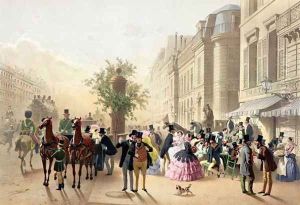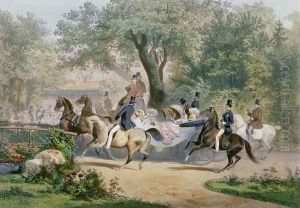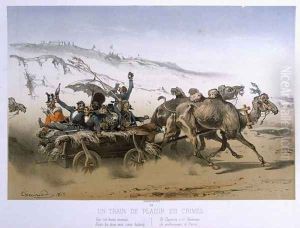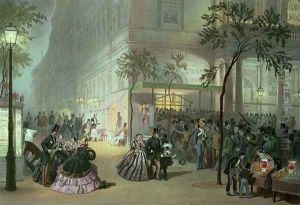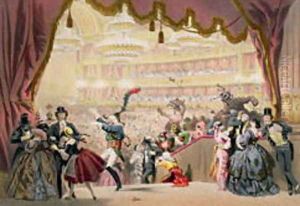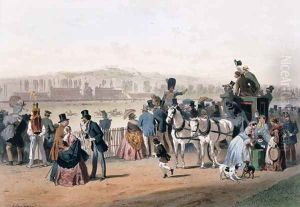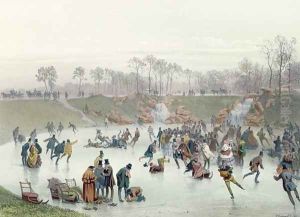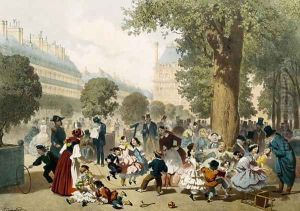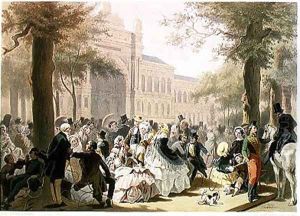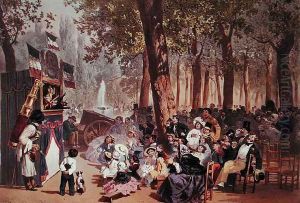Eugene Charles Francois Guerard Paintings
Eugène von Guérard was an Austrian-born artist who became one of the most significant landscape painters in the history of Australian art. Born on November 17, 1811, in Vienna, Austria, Guérard was the son of a miniature painter at the court of Francis I of Austria, and he inherited his father's artistic talents. He studied at the Academy of Fine Arts Vienna and traveled extensively through Italy, where he was greatly influenced by the Italian masters and the diverse landscapes.
Guérard's adventurous spirit led him to Australia during the gold rush in 1852, where he tried his luck as a miner. However, he soon realized that his true calling was painting, and he began to document the Australian landscape with a particular fascination for the untamed wilderness, which was largely unknown to European audiences at the time.
Throughout his career in Australia, Guérard captured the sublime and varied scenery with meticulous detail and romantic sensibility. His works often reflect a profound respect for nature and a meticulous approach to topographical accuracy, combined with an artful rendering of light, atmosphere, and texture. His paintings like 'Northeast View from the Northern Top of Mount Kosciusko' (1863) are celebrated for their precision and depth, which was achieved through careful observation and on-site sketches.
Despite his success as a painter, Guérard also faced financial difficulties and periods of professional obscurity. Nonetheless, he continued to contribute to the Australian art scene as a teacher, sharing his knowledge and techniques with the next generation of artists. In 1870, he was appointed the first Master of the School of Painting at the National Gallery of Victoria, where he influenced many young Australian artists.
Eugène von Guérard's legacy is marked by the way he captured the Australian landscape, which played a significant role in shaping the nation's visual identity and cultural heritage. His appreciation for the natural environment also prefigured aspects of the environmental movement. Guérard's work fell into obscurity in the late 19th century but was rediscovered and revalued in the 20th century, particularly during the 1950s and onwards. He died on April 17, 1901, in London, England, but his work continues to be appreciated for its historical and artistic significance.
